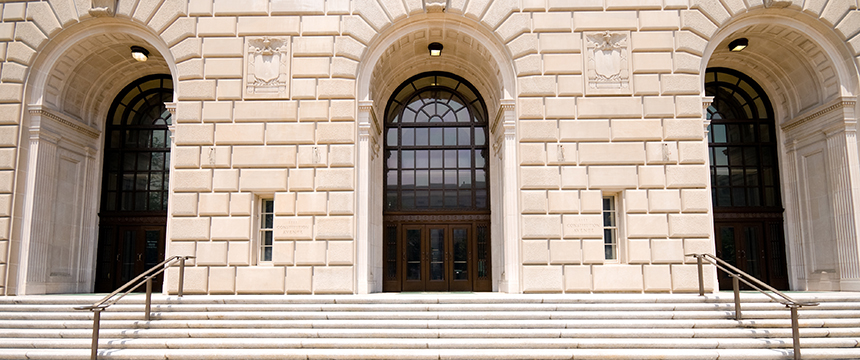IRS Releases Final Regulations for Section 45X Advanced Manufacturing Credit

The Internal Revenue Service (“IRS”) and Department of the Treasury last week released final regulations (the “Final Regulations”) relating to the advanced manufacturing production tax credit under Section 45X (“45X Credits”) of the Internal Revenue Code (the “Code”). The release of the Final Regulations follows the issuance of proposed regulations in December 2023 (the “Proposed Regulations”), which we described here. The final regulations are available here.
The Final Regulations largely adopt the Proposed Regulations, with a few exceptions. Importantly, these Final Regulations are applicable to eligible components and applicable critical minerals for which production is completed and sales occur after December 31, 2022, and during taxable years ending on or after October 28, 2024. Taxpayers may rely on the Final Regulations for eligible components for which production and sales occur after December 31, 2022, and taxable years ending before October 28, 2024, so long as the regulations are followed in their entirety in a consistent manner.
The following provides a brief background of Section 45X of the Code, as well as a summary of the key points from the Final Regulations, highlighting the changes to the calculation of production costs for both electrode active materials and applicable critical minerals.
Background to Section 45X Advanced Manufacturing Credit
Section 45X of the Code, enacted as part of the Inflation Reduction Act in August 2022, provides a manufacturing production tax credit to taxpayers that produce and sell to an unrelated person during the taxable year certain components for renewable energy and battery storage projects, including certain critical minerals. The tax credit rate varies depending on the eligible component. 45X Credits may be claimed by the taxpayer that produces eligible components. A taxpayer otherwise entitled to claim the 45X Credits may sell 45X Credits to another taxpayer pursuant to Section 6418 of the Code, or claim direct payments in lieu of the tax credits for a five-year period pursuant to Section 6417 of the Code. 45X Credits are set to phase out starting in 2030.
The Final Regulations for 45X Credits
The Final Regulations provide guidance on a number of issues relating to the advanced manufacturing credit. Among the highlights:
- The Final Regulations expand the definition of “produced by the taxpayer” to include secondary production, which is defined as the production of an eligible component using recycled materials. Although the preamble to the Proposed Regulations had indicated that secondary production is eligible, the clarification will be welcome news to many taxpayers.
- The term “mere assembly” from the Proposed Regulations is replaced with “minor assembly” regarding whether certain activities or processes result in substantial transformation.
- This change is primarily concerned with certain eligible components, such as solar modules and battery modules using battery cells, that may be produced primarily by assembling other components but which are clearly eligible for the 45X Credit even though no production beyond assembly is performed by the eligible taxpayer.
- Like under the Proposed Regulations, where the eligible components have undergone substantial transformation and only minor assembly remains, the party who only performs minor assembly is not entitled to 45X Credits.
- §1.45X-1(c)(3)(v)(D), Example 4 is added to demonstrate how contract manufacturing provisions may apply to taxpayers who perform extracting and refining activities.
- The Final Regulations maintain that the domestic production requirement does not apply to constituent elements, materials and subcomponents used in the production of eligible components.
- The Final Regulations clarify the requirements for the signed certification statement, which was left open-ended in the Proposed Regulations, to be made in connection with a contract manufacturing arrangement between parties. Going forward, such signed certification statement must be made in the manner required in Form 7202 (Advanced Manufacturing Production Credit).
- The Final Regulations revised portions of the rules related to specific eligible components. Modifications were made for:
- Solar energy components, including photovoltaic cells, polymeric backsheet, and solar grade polysilicon
- Related offshore wind vessels
- The total rated capacity of completed wind turbines
- Inverters
- Qualified battery components
- Battery cells
- Modules using battery cells
- Applicable critical materials
- With respect to the definition of aluminum, the Treasury Department and IRS have determined that additional consideration is necessary prior to finalizing Section1.45X-4(b)(1) of the Proposed Regulations.
- The Final Regulations contain several changes to the calculation of production costs for purposes of calculating 45X Credit related to electrode active materials and applicable critical minerals.
- For both electrode active materials and applicable critical minerals, the Final Regulations allow taxpayers to include extraction costs related to the extraction of raw minerals in the United States or a United States territory in the calculation of production costs, but only if such costs are paid or incurred by the taxpayer claiming the 45X Credits.
- Additionally, the Final Regulations clarify that taxpayers may also include direct and indirect materials costs in production costs if those material costs do not relate to the purchase of materials that are, at the time of purchase, an eligible component.
- While left ambiguous in the Proposed Regulations, the Final Regulations clarify that a taxpayer may not include the same production costs in the calculation of the credit amount for more than one eligible component.
- The substantiation rules for applicable critical minerals were extended and were duplicated for electrode active materials. To include materials costs as production costs, the taxpayer must submit, along with its tax return for each year in which 45X Credits are claimed, a certification from each relevant supplier stating that the supplier is not claiming the 45X Credit and is not aware of any prior supplier claiming the 45X Credit. The taxpayer must also maintain in its books and records: an analysis concluding that any constituent elements, materials, or subcomponents did not meet the definition of an eligible component at the time of acquisition; a list of direct and indirect material costs; a document establishing that the materials were used in the production of the electrode active material or the applicable critical mineral; and any other information related to the direct or indirect materials specified in guidance.
The Foley team will continue to monitor developments related to 45X Credits. Please reach out to one of our team members if you have any questions.

